Model 2325 Bi-Potentiostat for RRDE-3A
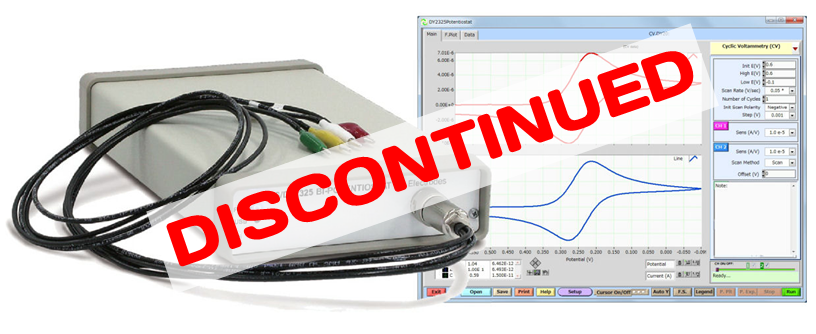
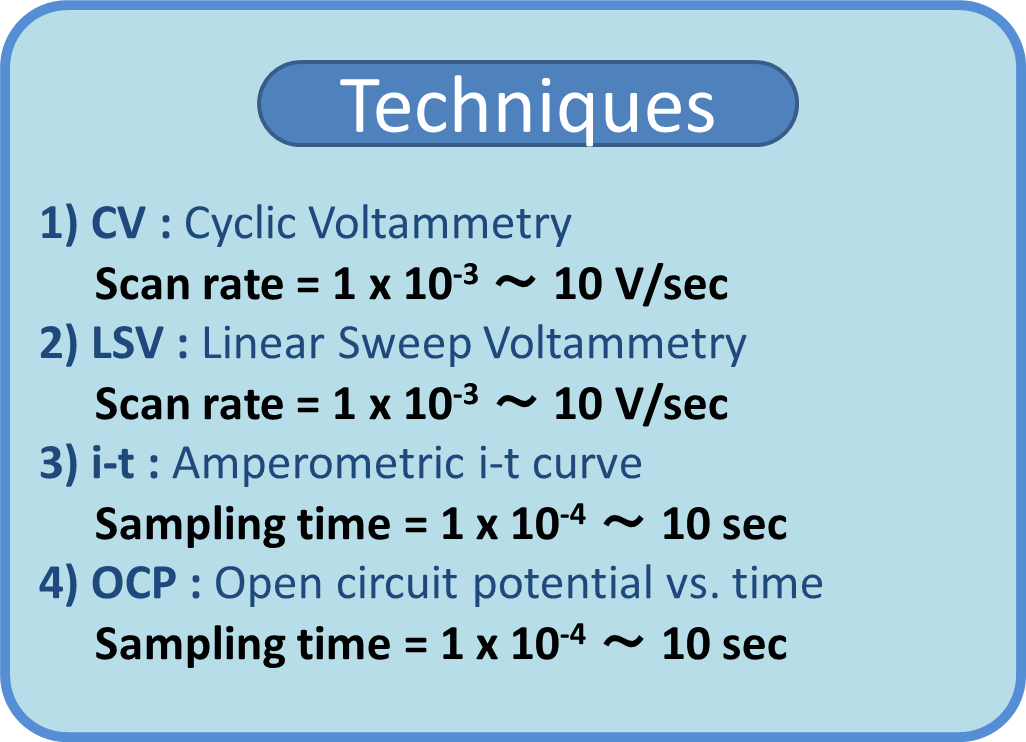
Model 2325 is a very low-price and high-performance Bi-Potentiostat based on modern semiconductor circuity and advanced software technology. Low noise, high speed and small space measurement were considerate for the
development of Model 2325. The user-friendly interface is designed for supporting wide applications. Model 2325 can be applied in various experiments, such as RRDE, sensor development and spectroelectro-chemical measurements, etc. It can be not only applied for research purpose, but also for student experiments and industrial applications due to the low-price and high-performance.
- Features
- Configuration
- Software data processing
- Specifications
- Bi-Potentiostat
- High-performance
- Compact design
- RRDE system control
- Repeated or sequence measurement
- Levich and Koutecky-Levich plot
Configuration for the experimental system

Model 2325 Bi-Potentiostat software data processing
Model 2325 is digital controlled by PC software, whereas its price is almost same to the analog equipment. Dual channel CVs measured by Bi-Potentiostat can be plotted simultaneously on the software window. It is easy to overlay the CV curves for data comparison and the peak fitting function necessary for the data analysis is also included. In the setup screen, the rotation speed of the RRDE and gas purge ON/OFF can be controlled. The Model 2325 software is quite easy-to-use, even the beginners of the electrochemical measurements can easily work on it for the first time try.
Levich and Koutecky-Levich plot
Rotating disk electrode (RDE) is the method to obtain a forced convective voltammogram by which the data analysis is performed using the Levich or Koutecky-Levich plot, and also can calculate the parameters such as diffusion coefficient and electron number.
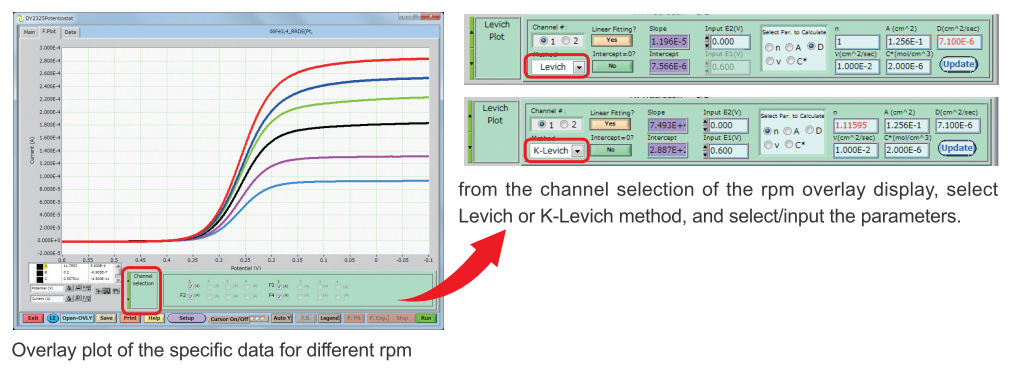
Peak vs San rate plot
Conventional cyclic voltammogram (CV) is overlay displayed, by which the data analysis of peak intensity (ip), peak potential (Ep) or peak difference potential (d(Ep)) in function of the scan rate can be performed, and also can display the slope and interception.
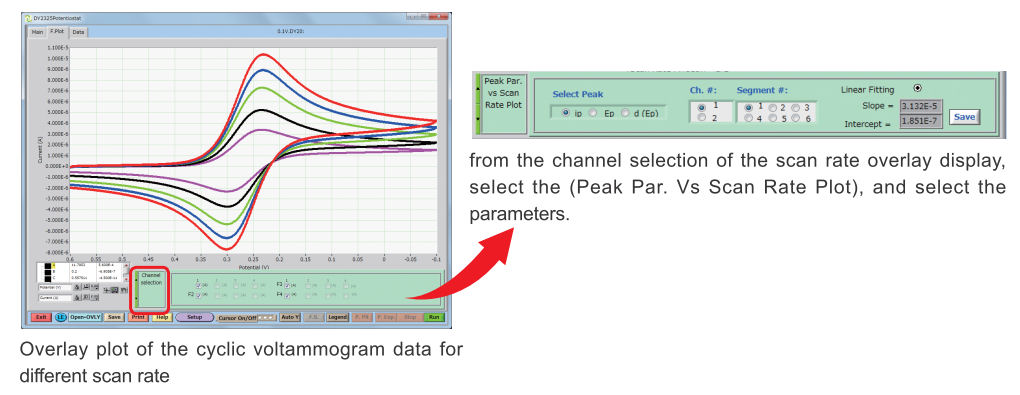
Execution (Automatic run)
When you click SETUP button, in the main window, General screen appears, also the System and Execution screen can be selected.
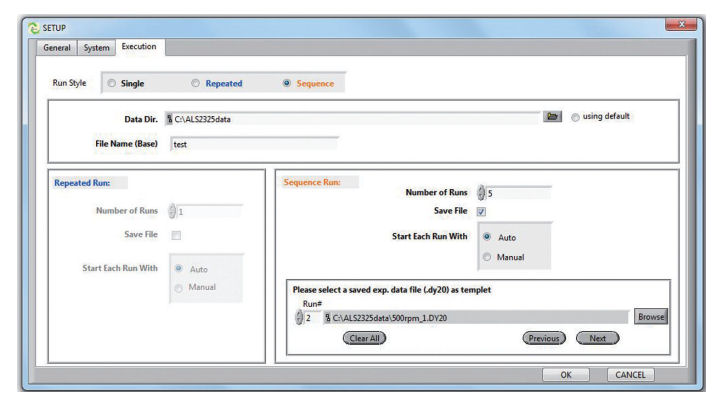
From the Execution screen, run style can be setting, as single, repeated or sequence, according to the experimental conditions required.
For the repeated and sequence run, the run start can be selected as AUTO or MANUAL. After each run, the result data is automatically saved in a
determined directory.
| Catalog No. | Description |
| 013345 | Model 2325 Bi-Potentiostat |
| 013349 | Model 2325 Software |
| Hardware | |
| Potential range | ± 4.0 V |
| Current range | ± 50 mA |
| Sensitivity range | 1 x 10-7 ∼ 0.05 V/A |
| Input impedance | 1 x 1012 Ω |
| Min. Potential Step | 1.0 mV |
| Maximum sampling rate | 10 kHz |
| Maximum data points | 15,000 (until 65,000 points, depending of the parameters) |
| Background current | < 0.2 nA |
| Current Resolution | 3 pA |
| Scan rate (CV) | 1 x 10-3 ∼ 10 V/sec |
| Dimensions (W x D x H) | 150 x 260 x 50 mm |
| Weight | 1 kg |
| Operating system | WindowsTM 8.1 / 10 ∗ |
| Power Requirements | 90 ∼ 240 VAC, 10W |
| Accessories | Cell cable, AC adaptor, Accessory cable, and Manual |
| Software Techniques & Measurement range | |
| CV | 1 x 10-3 ∼ 10 V/sec |
| LSV | 1 x 10-3 ∼ 10 V/sec |
| i-t | 1 x 10-4 ∼ 10 V/sec (Sampling time) |
| OCP-T | 1 x 10-4 ∼ 10 V/sec (Sampling time) |
| RDE | 0 ∼ 10 V output |
Please refer to the Windows lifecycle fact sheet.
(Note: Windows 10 in S mode is not supported, please switch out of S mode in Windows 10.)

